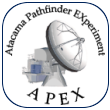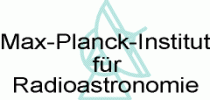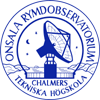LABOCA observing time calculator, Ver 3.1
You can either calculate the RMS for a given integration time, or calculate the integration time needed to reach a certain RMS.
The mean point-source sensitivity of the array, determined from on-sky integrations, is 60 mJy sqrt(s). This value is achieved only by filtering the low frequencies (hence large scale emission) to reject residual sky-noise. Without low frequency filtering the observations become sensitive to extended emission at the cost of the mean array sensitivity increasing to 100 mJy sqrt(s). The proper value is selected based on if "Point source(s)" or "Extended source(s)" is checked.
Scanning area should correspond to the area covered by the scanning pattern. For a single point source, this value should be set to 0. Note that the unit is square arc minutes (arcmin2).
The calculated integration time does not include any overhead times. This overhead includes setup, target acquisition, software setup, data transfer time (writing the FITS file), telescope slewing time, and calibrations (skydips, focus, pointings and flux calibration). In order to facilitate the calculation of the total observing time needed to achive a certain goal in rms noise, a time calculation including an avarage combined overhead of 65% is also presented by the observing time calculator.
The standard way of observing with LABOCA is in mapping mode. This observing mode will result in a fully sampled map of the taget area. If the target is a point source, and the source position is known to of the order of 1", and it is located in an otherwise emission-free environment, one could select wobbler on-off mode. As the name indicates, it uses the wobbler to alternate between the source and the sky. This mode allows using the pixel with best characteristics for the observation, maximizing its on-source time, and allowing for a very efficient sky-noise reduction. Please note that this mode will not give a fully sampled map of the area, only the the emission in the center position
A default PWV of 1.0 mm is proposed. You can change this value below (this value corresponds to a line-of-sight opacity of 0.373 at an elevation of 60 degrees).
Version history
- Version 1.0: Based on the experience in the science verification.
- Version 2.0: Based on observations. Adding wobbler on-off and mode and possibility to change elevation
- Version 3.0: Adding the possibilty to change the PWV.
- Version 3.1: The RMS obtainded in wobbler mode has been updated, based on data accumulated over the years.




